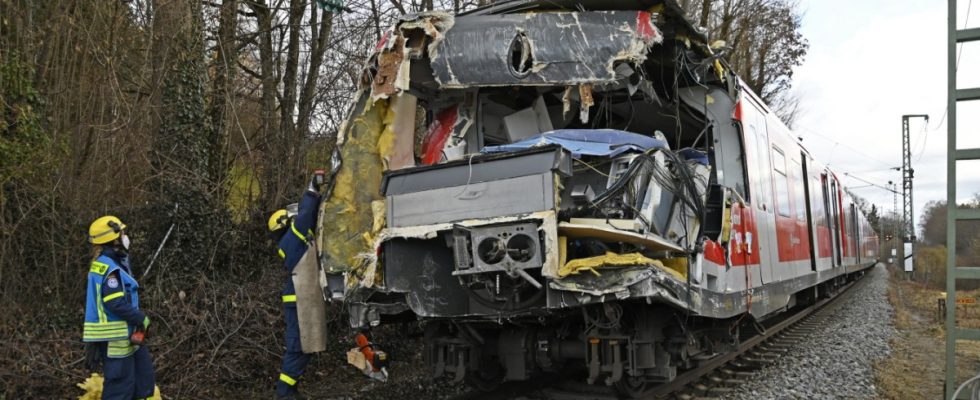It is day two in the trial surrounding the devastating S-Bahn accident near Schäftlarn, and the court is trying to get closer to the truth by hearing from experts. Richard Z., the driver of the locomotive involved in the accident, made a confession, but at the same time stated that he could no longer remember anything.
It was February 14, 2022, when Richard Z. drove the S7 from Wolfratshausen towards Munich for the third time that afternoon. He is said to have told a colleague that he wasn’t feeling so well. He himself explains to the district court that it was a nice day and that he felt good.
However, when approaching the Ebenhausen-Schäftlarn train station, according to the expert Martin Will, Z. was already traveling too fast and was automatically braked. Will is a qualified engineer and an expert in the railway industry. Richard Z. should have reported to the dispatcher now, but he didn’t.
Using a later filmed video and a simulation, the spectators drive the route in the driver’s cab in room A22 of the district court. Ebenhausen-Schäftlarn train station: The exit signal shows two red lights, “you couldn’t make a signal clearer,” says the expert. The following route is single-track. Richard Z. drives off anyway, is forced to brake by the system, but is able to free himself from the emergency braking and accelerate. “This may be a mistake in the system,” says the expert. He also finds it reprehensible “how laxly the railway treats it when the railcar drivers do not adhere to the speed limits.” The expert cannot find any technical errors in the system that would have led to the accident.
Richard Z. drives at 67 kilometers per hour on the single-track route. At 4:35 p.m. he must have noticed the S-Bahn stationed on the tracks in the opposite direction. According to the expert, he initiated rapid braking. Five seconds remained before the collision. Z. must have used this to get himself to safety and escape into the wagon.
The accused train driver was not under the influence of drugs or alcohol that day and was not distracted by his cell phone. He claims to be physically healthy except for high blood pressure. He could operate the S-Bahn, set signals – and brake. From a toxicological point of view, says forensic doctor Jessica Welter-Lüdeke, Z. was “fully controllable”.
How is this compatible with amnesia?
What then remains as an explanation? A mental illness? Forensic physician Matthias Eppler explains that Richard Z. said he couldn’t remember anything, but he was conscious when he was found and immediately asked: “What happened? Am I to blame?” The doctors write in the report that Z. suffers from flashbacks, lightning-like fragments of memories. But how can this be explained by amnesia, i.e. a loss of memory, the doctor asks.
According to the train driver’s statements, there must be anterograde and retrograde amnesia. So a loss of memory before and after the traumatic event. Z.’s statement that he was surprised that he didn’t see the oncoming S-Bahn in Icking speaks against this. The doctor doesn’t think it was a concussion either. Otherwise, all that remains is psychogenic amnesia – or an “intentional feigning” of amnesia. The trial continues on March 7th.

